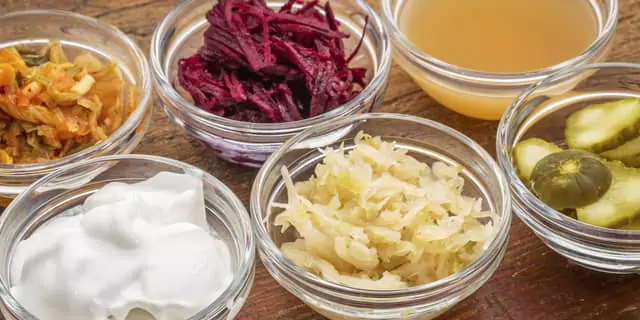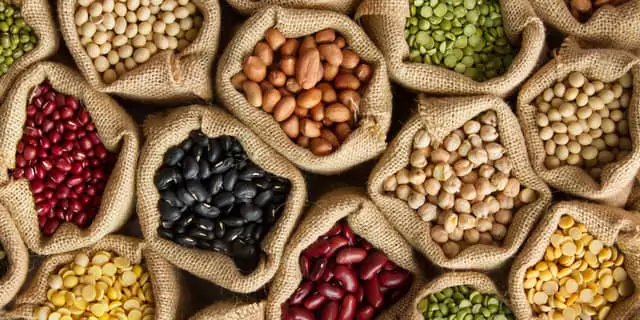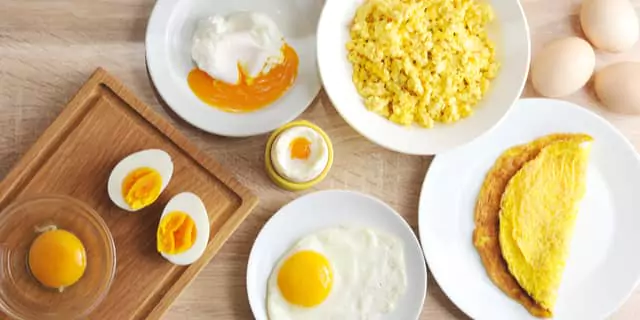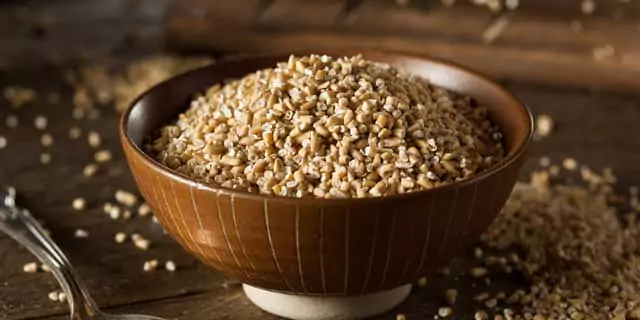
Over 120 million Americans have high blood sugar or diabetes. That’s a scary fact. What might be an even scarier one is that most of them don’t know they do. Fortunately, we know that the most successful preventative care approach for these conditions is watching your blood glucose (or blood sugar) levels.
When it comes to blood sugar levels, nutrition is the leading factor impacting them. Most foods will not lower glucose levels, but certain foods have shown they can help control them. You might think that blood sugar is only affected by the amount of sugar, carbohydrates, and fats you eat. Surprisingly, that’s not the case! Vitamins and minerals in your diet also play a key part in controlling your blood sugars.
How Food Impacts Your Blood Sugar Levels
All foods that you eat can impact blood sugar levels. Sugar and carbohydrates, however, have the most significant effect. That’s because after you eat carbs, your body breaks them down into sugar that enters your bloodstream, increasing your blood glucose levels.
But, that doesn’t mean all digestible carbohydrates work the same. Our bodies digest high fiber foods slower, making the rise in blood sugar more gradual instead of one big spike. Soluble fiber also helps reduce blood sugar levels by improving insulin sensitivity. Processed carbohydrates, on the other hand, cause those sharp spikes in blood sugar and boost triglyceride levels.

Trying to digest all the information on how your body processes carbohydrates and sugars can be overwhelming. That’s where using the glycemic index can make it easier to understand. The glycemic index ranks foods on a scale from 0-100. The higher the number, the more your blood sugar will spike after eating.
This tool is especially helpful when evaluating foods you want to include in your overall healthy lifestyle plan. However, it is important to keep in mind that the glycemic index just predicts how someone’s glucose will respond to food on average. After taking unique personal differences into account, some people may see a response higher or lower than the average.
14 Foods to Help Lower Blood Sugar
Setting up a diet for healthier blood sugar levels is all about finding foods that work for you. The 14 foods below can be your easy (and delicious) starting point to build a meal plan that keeps your blood sugar under control.
1) Coldwater Fish
Coldwater fish like cod, haddock, salmon, pollock, or tuna are good sources of protein, omega fatty acids, vitamins, minerals, and antioxidants. These combined factors play a key role in regulating blood sugar levels. Fish also do not contain any carbohydrates, so their glycemic index score is 0.
Another bonus in favor of adding coldwater fish to your diet is that their high protein can increase fullness after meals. This helps minimize the likelihood of overindulgence and reduces cravings for sugars and carbohydrates later in the day.
2) Apple Cider Vinegar

Recent research has shown having a bit of apple cider vinegar at meals and bedtime has a positive effect on glucose levels. That’s because acetic acid—the main component in apple cider vinegar—helps reduce starch digestion and gastric emptying during sleep. It also changes how your body breaks down glucose, improving the pre-breakfast rise in fasting glucose levels.
You can think of apple cider vinegar as a magical appetizer that helps your body fight the carb coma after a meal. Using it before high-carb meals improves post-meal blood sugar, insulin unsteadiness, and insulin sensitivity.
3) Probiotic Foods

Probiotics are tough little gut bacteria that help with protecting your pancreas. The pancreas is the boss when it comes to stabilizing blood sugar, so properly caring for it is vital in controlling your blood sugar. Our gut microbiome and glucose levels are closely linked, and a healthy microbiome will lead to more stable glucose levels.
Plus, as long as there is no added sugar, these foods also have a low glycemic index as well.
Fermented foods such as kefir, yogurt, sauerkraut, and kimchi are probiotic foods. These foods contain live bacteria and yeasts that are critical for a healthy functioning gut.
4) Prebiotic Foods

Prebiotic foods can play a role in many health conditions. Prebiotics are a type of non-digestible fiber that are commonly found in many different foods. They are different from probiotics in that they do not contain active bacteria, but instead, they are a fuel source for our existing gut bacteria. By fueling our healthy microbes, we can improve our gut health which will also improve glucose values.
Examples of common prebiotic foods include garlic, onions, leeks, asparagus, spinach, seaweed, green bananas, and cocoa.
5) Garlic

Studies suggest that regular garlic consumption may potentially reduce blood sugar levels in as little as one to two weeks, but current research is still inconclusive. Garlic has traditionally been recommended to help lower high cholesterol levels and help reduce high blood pressure, which overall helps reduce the risk of heart disease.
Furthermore, current research suggests that eating moderate amounts of garlic may be particularly beneficial for people with diabetes due to its ability to reduce insulin resistance and regulate blood glucose. However, individual responses may vary, and garlic should not be a substitute for established diabetes management strategies.
Thus far, the research into whether garlic lowers blood sugar levels is interesting, but future studies are required to confirm garlic's exact mechanism for supporting blood sugar regulation
6) Legumes

Legumes like beans, peas, chickpeas, and lentils are a great source of fiber, protein, and complex carbohydrates. They help moderate blood sugar after meals and can support lower blood sugar levels overall.
Many legumes have good glycemic index scores below 40. It's crucial to find legumes that are not in syrups, sauces, or marinades, though, as these increase the glycemic index.
7) Wild Blueberries

Blueberries are low in calories and carbohydrates but high in dietary fiber. They’re also rich in antioxidants called polyphenols which improve blood sugar levels and inflammation in diabetic adults. Fresh, frozen, and freeze-dried blueberries will all give you these benefits.
Wild blueberries have a glycemic index lower than 55, along with the ability to improve insulin response and blood sugar levels after meals. Be sure to avoid berries in syrups and juices, as these will increase glycemic index scores.
8) Turkey

Since turkey is a protein, it has a glycemic index score of a perfect 0. It’s also packed with chromium—a trace mineral not naturally occurring in our bodies, but one that’s essential in the breakdown of food.
Turkey packs a one, two punch for controlling your blood sugar. First, chromium helps the insulin in your body control your blood sugar. Then, the protein slows digestion, preventing blood sugar spikes.
9) Cod Liver Oil

Cod liver oil is a Vitamin D-rich supplement that helps glucose control by supporting the hormones that regulate insulin effectiveness in your body. This increased insulin effectiveness can protect you from type 2 diabetes and can lower your hemoglobin A1C value.
Boasting a glycemic index score of 0, cod liver oil is easy to add to your daily routine. You can take it in oil form or capsule form, depending on your preference.
10) Oysters

As a protein, oysters have a glycemic index score of 0. Oysters also have high levels of zinc, which helps process the sugar in your bloodstream. The zinc and protein in oysters control fasting blood sugars, post-meal blood sugars, and hemoglobin A1C levels.
Their nutritional benefit doesn’t end at controlling blood sugars, though. Zinc is also helpful for strengthening your immune system. Oysters are flexible as well—safe to eat raw or cooked into soups, stews, and even pasta dishes.
11) Flax Seeds and Chia Seeds

Chia and flax seeds are both rich in fiber and omega fatty acids and have a glycemic index score below 10. The fiber improves blood sugar control and insulin sensitivity by encouraging a steady rise in blood sugar, preventing roller coaster spikes and drops. This stabilizing effect helps you avoid a sluggish feeling after meals.
They’re also one of the most flexible foods on this list, making simple, tasty additions to your favorite salads, yogurt, and smoothies. You can even try making chia seed pudding as a low glycemic dessert option!
12) Nuts and Nut Butter

Whole and unprocessed nuts and nut butter have very low glycemic index scores of less than 20. Nuts are high in fiber and make a great snack food or addition to meals. Nut butter is a strong option to help satisfy your sweet tooth without the major spike in your blood sugar.
Nuts and nut butter also have plant proteins, good fats, magnesium, and potassium. These nutrients are important for stabilizing blood sugars and preventing heart disease. When purchasing nut butter, always read the ingredients list on the nutrition label as many brands tend to add sugar to their nut butter. Choose an option that only has nuts or nuts and salt as the ingredients.
13) Eggs

Eggs are perfect as a fast, easy addition of protein to any meal or snack. That high protein also offers many benefits. It keeps you fuller for longer and improves fasting blood sugar levels while also slowing your body’s digestion and absorption of sugar into your bloodstream.
14) Steel-Cut Oatmeal and Oat Bran

Oats have medium to high amounts of dissolvable fiber, which is essential for blood sugar control. They also contain beta-glucans (a fancy way to describe fiber) that can help maintain glycemic control and improve insulin sensitivity. Steel-cut oats in particular have a low glycemic index and can lead to a more even glucose response.
Oats also naturally contain what is called “resistant starch.” Resistant starch cannot be broken down by the digestive system (it’s “resistant” to digestion) and instead passes through the GI tract. It then makes its way to the colon and helps to feed the friendly gut bacteria there, causing a lower glucose response overall. You can help preserve this resistant starch by making overnight oats rather than cooking them hot!
Why You Should Create a Healthy Lifestyle Plan

Nutrition is the biggest priority in maintaining blood sugar. Monitoring diet alone, though, doesn’t cover everything you need for optimal blood sugar control.
In addition to an improved diet, you can support healthy blood sugar levels by:
- Drinking water to stay hydrated
- Exercising regularly
- Maintaining a healthy body weight
- Managing your stress levels
- Getting adequate sleep
- Monitoring your glucose levels
Engage with Your Blood Glucose Levels with Nutrisense
Your blood sugar levels can significantly impact how your body feels and functions. That’s why stable blood glucose levels can be an important factor in supporting overall wellbeing.
With Nutrisense, you’ll be able to track your blood glucose levels over time using a CGM, so you can make lifestyle choices that support healthy living.
When you join the Nutrisense CGM program, our team of credentialed dietitians and nutritionists are available for additional support and guidance to help you reach your goals.
Ready to take the first step? Start with our quiz to see how Nutrisense can support your health.
Find the right Nutrisense programto help you discover and reach your health potential.

Kara Collier is the co-founder and VP of Health at Nutrisense, one of America’s fastest-growing wellness-tech startups, where she leads the health team. She is a Forbes 30 under 30 recipient, frequent podcast guest & conference speaker.




